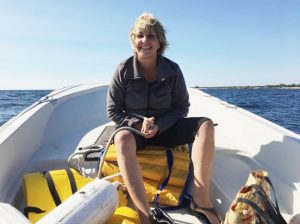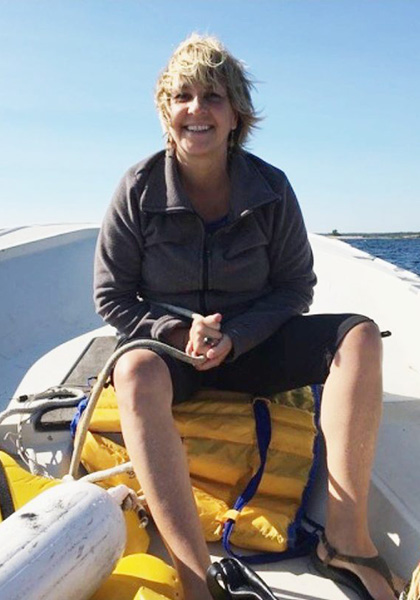Last month, Tides Canada’s CEO, Joanna Kerr gave a speech to a group of environmental funders asking this provocative question. Read on to understand her take on how we best achieve environmental, economic and social goals simultaneously.

By the age of 10 I had been charged by an elephant, watched a cheetah eat a gazelle and discovered the banana frog. My childhood included years growing up in Tanzania filled with such fond memories. Mount Kilimanjaro was covered with snow. Every holiday we would go on safaris in our tiny beat up car. It was a time when one could drive across the Serengeti plains and witness the great migrations and not see another car for hours.
But on one of our safaris into the world famous Ngorongoro crater, a place teeming with biodiversity, we came upon a group of Maasai warriors wielding their spears and creating a blockade. My father had to explain to his daughters: these Indigenous people had been kicked off their land in the crater to create a “tourist park” and had no means to sustain themselves.
It was really as a result of my upbringing that sparked my early career in international development. And most of that career has been dedicated to working with women to advance their rights and tackle extreme poverty. Then, about 8 years ago, another “aha moment” happened.
I was the CEO of a large international organization, visiting some extremely innovative work to end violence against women in Ethiopia. Upon leaving, I asked the leader if there was any lesson or message to take back to my colleagues. She looked me in the eyes and said, “pray for the rain”.
Pray for the rain? Women were preoccupied with the rain for their survival! They could no longer depend on the weather to feed their families. THIS was actually their greatest obstacle to a life with rights and dignity. Why didn’t more of us make this connection? Not soon after, I joined Greenpeace in Canada. And now, this year I took up the role with Tides Canada.
Having spent my career focused on tackling poverty, advancing rights, and protecting the environment around the world, I clearly see how these movements and funding channels are siloed in a way that is undermining our ability to achieve any of them.
All these critical issues are competing for the hearts, minds and money of politicians and the public. Environmentalists keep escalating the doomsday warnings. In the meantime, other groups are desperately organizing for a safe asylum, freedom from violence, the right to an identity, to an accessible abortion…
And then there are many, who feel on the outside as the economy leaves them behind, angry, fearful that secure jobs and simpler times are a thing of the past.
So, what if we can actually achieve social justice, economic prosperity AND planetary health simultaneously. Wouldn’t that be the answer?
I see more and more of these solutions at the community level. Perhaps then we need to figure out how to bring more of them to scale.
At Tides Canada we are active in the Canadian Arctic working to build resilient communities, protect precious biodiversity and rights. Our theory of change in the North clearly demonstrates the interdependence of people, nature, and economy:
- If ecosystems are healthy, sustainable livelihoods are viable
- If sustainable livelihoods are viable, communities are vibrant and resilient
- If communities are vibrant and resilient, then leaders are grounded in Indigenous ways of being
- If leaders are grounded in Indigenous ways of being ecosystems will be healthy
Could it be, at a time when global and national leadership is failing us, innovation will come from the bottom-up? Those embedded in the community and closest to its complex problems are in a unique position to address shared challenges.
…Like an innovative proposal from postal workers of Canada to transform the thousands of post offices into electric charging stations and social innovation hubs with door to door mail carriers that check in on seniors and people with disabilities.
…or artisanal fishing fleets that are sustainably harvesting seafood, bringing back Indigenous cultural practices, creating new jobs, and improving human health.
…or look to the Great Bear Rainforest, a huge protected intact temperate forest where multiple land-use strategies co-exist. Communities steward the land and earn an income. Win, win, win.
We know that mass species extinction and profound climate crisis is imminent, but yet only a small proportion of change agents are working on this urgent agenda. We clearly need to create a bigger tent– but how?
As with the Maasai, we can’t just keep people out of so-called “wild places”. Nor can we simply plug our programmes into the SDG framework.
As biodiversity funders, our funding portfolios need to de-silo and be able to embrace social, economic AND environmental strategies simultaneously.
With communities often up against powerful developers or politicians dangling factory jobs we need to support them already organizing for economic options that include biodiversity regeneration.
In an interdependent world we need to increase the complexity of our own perspectives and response.
Let’s bust down silos and build a big tent for solutions for nature and people.
So here’s to frogs, feminism and sustainable factories.
For long-term systems change where nature is protected, let’s be part of the generation building conservation economies where no one is left behind.
